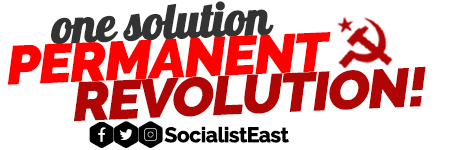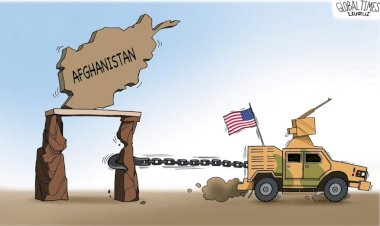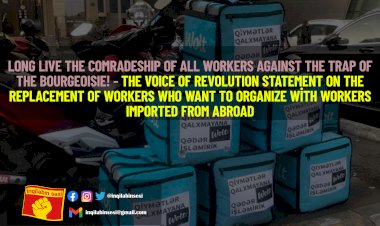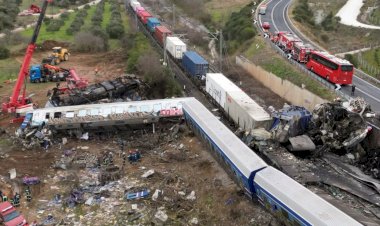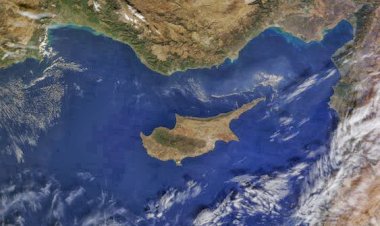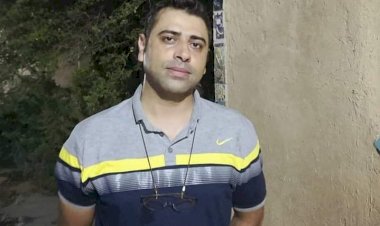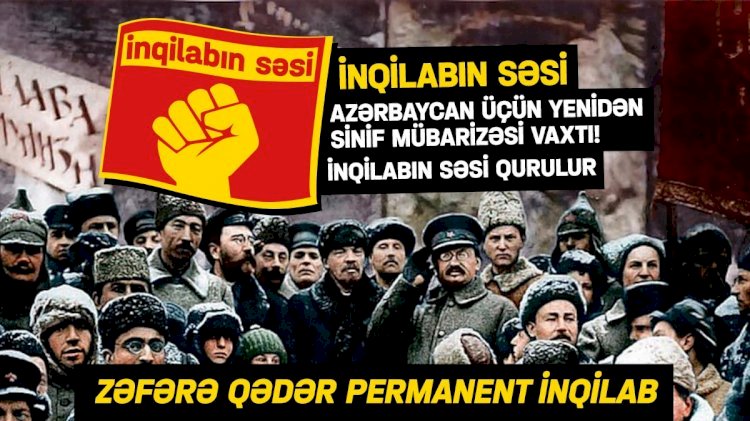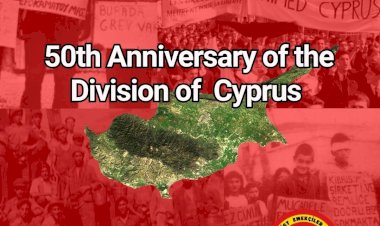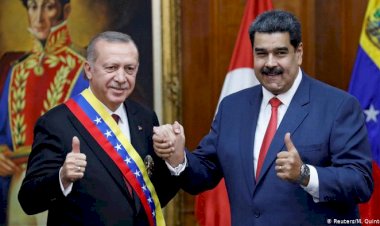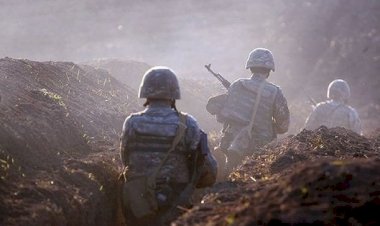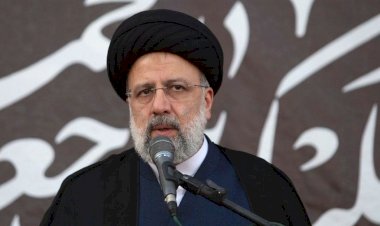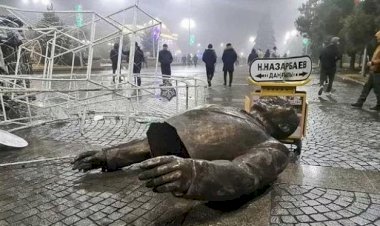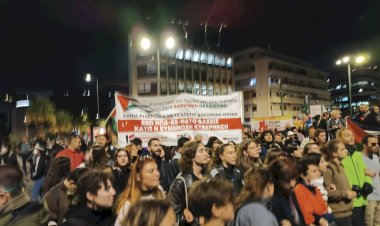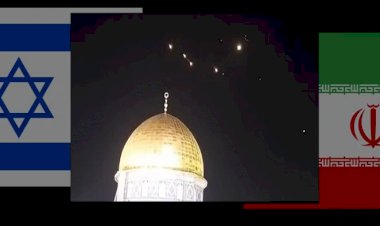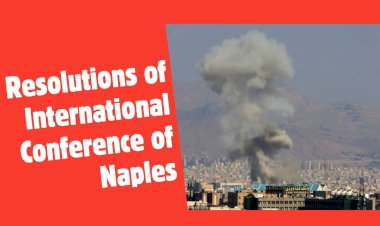Iran: The Lab of Revolution
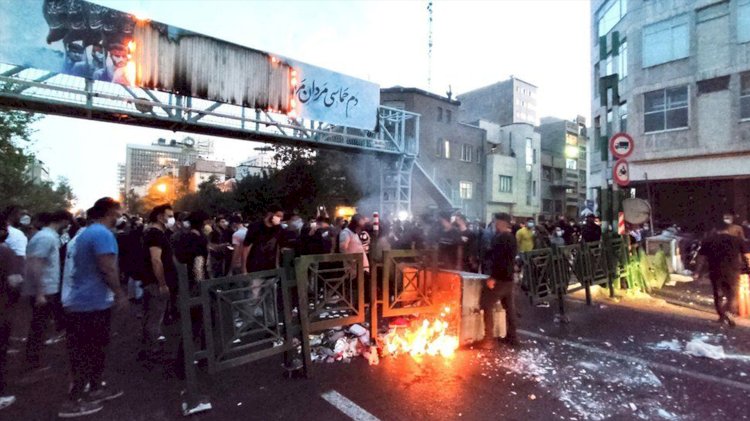
“[…] When it is impossible for the ruling classes to maintain their rule without any change; when there is a crisis, in one form or another, among the “upper classes”, a crisis in the policy of the ruling class, leading to a fissure through which the discontent and indignation of the oppressed classes burst forth” (Lenin, The Proletarian Revolution and the Renegade Kautsky).
This is how Lenin describes the "revolutionary situation". Apart from this, in terms of the extreme distress of the masses and the sharp increase in mobilization of the masses, it can be claimed that there is a revolutionary situation in Iran.
The mullahs in Iran are facing the biggest challenge in their history. After each suppressed revolt, the masses came stronger and radicalized. It was seen that massacres did not put off the people. That's why they largely abandoned the streets. They are also helpless in the face of strikes, but they have not completely lost control. There are some cracks on the mullahs’ side, but the state apparatus remains in its place and continues to function.
Without disintegration in the state apparatus, it will not be possible for the revolutionary situation to result in the overthrow of the regime. Capitalist mullahs are a ruling class with ideological cohesion, so the disintegration of the state apparatus should not be confused with the overthrow of the Rajapaksa clique in Sri Lanka this year, or even the overthrow of Egyptian dictator Hosni Mubarak. When Mubarak was overthrown, the bourgeois state apparatus resumed on. But when the mullah regime in Iran is overthrown, the main body of the state apparatus will have to be uprooted. And this will necessitate a great showdown with a large bloody and corrupted group. That is why the mullah state apparatus is struggling to survive.
The biggest disadvantage of the masses is disorganization. The alternative of the mullahs is still unformed, and this situation delays the resolution of key points in the state apparatus, especially the army. Because despite the great pressure from the grassroots, the elites at the critical positions do not want to lead the uncertainty and possible chaos by risking their lives.
On the other hand, the continuation of the protests without losing any of their power brings about the participation of the layers coming from behind in the revolt: the workers in critical sectors participating in the political strike movements or the shopkeepers starting to close their shutters all over the country. At this point, it may be possible for an effective general strike movement to emerge at a certain point in the process and a “dual power” in the country by the emergence of shuras (soviets) within this movement. The emergence of the Shura apparatus will not only mean the formation of a leadership to be followed by the whole society and the centralization of actions, but also cause the rebellion to gain an anti-capitalist content. The shuras government program is the only definitive solution to the not-so-unexpected catastrophe scenarios (ethnic/sectarian civil wars, foreign interventions and occupations) voiced after the fall of the mullah regime. Even if the disaster scenarios are not realized, if the revolution process is tried to be limited with the elimination of the mullahs, all the other major problems of Iranian society, except secularism, will remain unsolved. Class and national demands will come first among these. In such a deadlock environment, the future of even basic human rights and democratic rights will be in great uncertainty. That is why interrupting the revolution midway is a great danger. Only by making the revolution permanent can the problem of the working people, the youth and the oppressed peoples be solved. That is why it is vital that the working class and the vanguard strata of the youth make the masses discuss the program of the revolution and gather strength for a socialist break.
If the current revolutionary situation continues in the form of a failure, then one of the dangers waiting for Iran will be Bonapartism. If a stalemate arises in the struggle between the ruling classes and the working classes, a seemingly neutral dictator will establish an authoritarian rule and the class framework of the system will be preserved. The ruling classes have no choice but to agree with such a transfer of power, and the tired workers who cannot reach a conclusion with revolutionary breakthroughs may prefer to settle for partial gains. One of the scenarios brought up by Fehim Taştekin is this Bonapartism scenario. “The Revolutionary Guards, who have not been directly mobilized with the army until now, may prefer the mission of 'protecting the Islamic revolution' to a nationalist transformation and take the lead. There may be a transformation process where the mullahs regress and the military becomes decisive, individual freedoms such as the headscarf are recognized, but political freedoms are not. There are also those who voiced this possibility for the period after the religious leader Ali Khamenei, whose health deteriorated.”
The fact that the revolutionary vanguard is too weak is a great loss for Iran. Possibilities such as the danger of Bonapartism, ethnic strife, the intervention of some imperialist powers, including Turkey, emerge from this gap. As seen in the current rebellion in Iran, socialist ideas are quite common. The socialist influence is substantial in both the workers' movement, the students’ movement, and the oppressed nations’ movements, as in the Kurds. But the subjective factors corresponding to these objective developments, namely the socialist parties and movements, are far behind the process. Let alone domestic powers, a noteworthy socialist subject has not been able to manifest itself even among exiled groups. It is necessary to take the necessary steps urgently to solve this problem because even a small formation can make a big breakthrough and turn into a real alternative in such periods when the masses are shifting to the left. We, the revolutionaries in Turkey, have some responsibilities regarding the formation of this historical power.
“[…] When it is impossible for the ruling classes to maintain their rule without any change; when there is a crisis, in one form or another, among the “upper classes”, a crisis in the policy of the ruling class, leading to a fissure through which the discontent and indignation of the oppressed classes burst forth” (Lenin, The Proletarian Revolution and the Renegade Kautsky).
This is how Lenin describes the "revolutionary situation". Apart from this, in terms of the extreme distress of the masses and the sharp increase in mobilization of the masses, it can be claimed that there is a revolutionary situation in Iran.
The mullahs in Iran are facing the biggest challenge in their history. After each suppressed revolt, the masses came stronger and radicalized. It was seen that massacres did not put off the people. That's why they largely abandoned the streets. They are also helpless in the face of strikes, but they have not completely lost control. There are some cracks on the mullahs’ side, but the state apparatus remains in its place and continues to function.
Without disintegration in the state apparatus, it will not be possible for the revolutionary situation to result in the overthrow of the regime. Capitalist mullahs are a ruling class with ideological cohesion, so the disintegration of the state apparatus should not be confused with the overthrow of the Rajapaksa clique in Sri Lanka this year, or even the overthrow of Egyptian dictator Hosni Mubarak. When Mubarak was overthrown, the bourgeois state apparatus resumed on. But when the mullah regime in Iran is overthrown, the main body of the state apparatus will have to be uprooted. And this will necessitate a great showdown with a large bloody and corrupted group. That is why the mullah state apparatus is struggling to survive.
The biggest disadvantage of the masses is disorganization. The alternative of the mullahs is still unformed, and this situation delays the resolution of key points in the state apparatus, especially the army. Because despite the great pressure from the grassroots, the elites at the critical positions do not want to lead the uncertainty and possible chaos by risking their lives.
On the other hand, the continuation of the protests without losing any of their power brings about the participation of the layers coming from behind in the revolt: the workers in critical sectors participating in the political strike movements or the shopkeepers starting to close their shutters all over the country. At this point, it may be possible for an effective general strike movement to emerge at a certain point in the process and a “dual power” in the country by the emergence of shuras (soviets) within this movement. The emergence of the Shura apparatus will not only mean the formation of a leadership to be followed by the whole society and the centralization of actions, but also cause the rebellion to gain an anti-capitalist content. The shuras government program is the only definitive solution to the not-so-unexpected catastrophe scenarios (ethnic/sectarian civil wars, foreign interventions and occupations) voiced after the fall of the mullah regime. Even if the disaster scenarios are not realized, if the revolution process is tried to be limited with the elimination of the mullahs, all the other major problems of Iranian society, except secularism, will remain unsolved. Class and national demands will come first among these. In such a deadlock environment, the future of even basic human rights and democratic rights will be in great uncertainty. That is why interrupting the revolution midway is a great danger. Only by making the revolution permanent can the problem of the working people, the youth and the oppressed peoples be solved. That is why it is vital that the working class and the vanguard strata of the youth make the masses discuss the program of the revolution and gather strength for a socialist break.
If the current revolutionary situation continues in the form of a failure, then one of the dangers waiting for Iran will be Bonapartism. If a stalemate arises in the struggle between the ruling classes and the working classes, a seemingly neutral dictator will establish an authoritarian rule and the class framework of the system will be preserved. The ruling classes have no choice but to agree with such a transfer of power, and the tired workers who cannot reach a conclusion with revolutionary breakthroughs may prefer to settle for partial gains. One of the scenarios brought up by Fehim Taştekin is this Bonapartism scenario. “The Revolutionary Guards, who have not been directly mobilized with the army until now, may prefer the mission of 'protecting the Islamic revolution' to a nationalist transformation and take the lead. There may be a transformation process where the mullahs regress and the military becomes decisive, individual freedoms such as the headscarf are recognized, but political freedoms are not. There are also those who voiced this possibility for the period after the religious leader Ali Khamenei, whose health deteriorated.”
The fact that the revolutionary vanguard is too weak is a great loss for Iran. Possibilities such as the danger of Bonapartism, ethnic strife, the intervention of some imperialist powers, including Turkey, emerge from this gap. As seen in the current rebellion in Iran, socialist ideas are quite common. The socialist influence is substantial in both the workers' movement, the students’ movement, and the oppressed nations’ movements, as in the Kurds. But the subjective factors corresponding to these objective developments, namely the socialist parties and movements, are far behind the process. Let alone domestic powers, a noteworthy socialist subject has not been able to manifest itself even among exiled groups. It is necessary to take the necessary steps urgently to solve this problem because even a small formation can make a big breakthrough and turn into a real alternative in such periods when the masses are shifting to the left. We, the revolutionaries in Turkey, have some responsibilities regarding the formation of this historical power.
